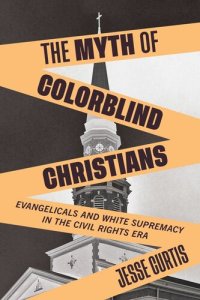
Ebook: The Myth of Colorblind Christians: Evangelicals and White Supremacy in the Civil Rights Era
Author: Jesse Curtis
- Year: 2021
- Publisher: New York University Press
- Language: English
- pdf
Reveals how Christian colorblindness expanded white evangelicalism and excluded Black evangelicals
In the decades after the civil rights movement, white Americans turned to an ideology of colorblindness. Personal kindness, not systemic reform, seemed to be the way to solve racial problems. In those same decades, a religious movement known as evangelicalism captured the nation’s attention and became a powerful political force. These two stories are deeply connected. In The Myth of Colorblind Christians, Jesse Curtis shows how white evangelicals’ efforts to grow their own institutions created an evangelical form of whiteness and infused the politics of colorblindness with sacred fervor. A church sanctuary, not a Republican Party meeting, proved to be the most influential site of evangelical activism in the second half of the twentieth century.
Christian colorblindness powered the evangelical coalition to new heights of influence even as it kept Black evangelicals on the outside looking in. While Black evangelicals used the rhetoric of Christian unity to challenge racism, white evangelicals used the same language to urge their Black counterparts to stop demanding racial reforms, arguing that all were equal under Christ and Christians should not talk about race. Christian colorblindness not only sidestepped the need to dismantle the American religio-racial hierarchy, but became a primary defense for it, as white evangelicals portrayed movements for racial justice as threats to Christian unity.
The push toward Christian colorblindness transformed American evangelicalism and the nation. Curtis argues that white evangelicals deployed Christian colorblindness not for antiracist purposes, but rather to protect new investments in whiteness. In the process, they anchored their own identities and shaped the very meaning of whiteness in American society. At once compelling and timely, The Myth of Colorblind Christians exposes how white evangelical communities avoided antiracist action and yet continue to thrive today.